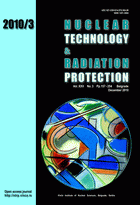
RADIATION DOSE AND RISK ASSESSMENT IN HYSTEROSALPINGOGRAPHY

Vol. XXV, No. 3, Pp. 157-254
December 2010
UDC 621.039+614.876:504.06
ISSN 1451-3994
Pages: 217-221
Authors: Darko V. Plećaš, Monika M. Živković, Olivera F. Ciraj-Bjelac
AbstractHysterosalpingography is an important diagnostic method for the evaluation of the female reproductive tract involving the exposure of patients to ionizing radiation. The irradiation of ovaries is unavoidable and radiation exposure of the patient and the associated radiological risk for the foetus and born child during the period of growth should be considered, as well. The purpose of this work is to evaluate organ and patient doses and radiation risks during hysterosalpingography procedures performed in a dedicated gynecological hospital. The entrance surface air kerma was measured for a total of 31 patients during hysterosalpingography. Based on the results obtained, the radiogenic risk for hereditary effects and cancer induction was estimated. The patient dose levels are in the range of 3-15 mGy, with a median value of 10 mGy, in terms of entrance surface air kerma. Estimated median ovarian and uterus doses are 1.7 and 2.3 mGy, respectively. The risk for fatal cancer and hereditary effects is estimated to be 5.5×10–5and 3.4×10–6, respectively. Although low compared to the natural incidence of genetic effects and cancer, it can be elevated in cases of prolonged or repeated procedures or procedures where the non-optimized protocol is used.
Key words: hysterosalpingography, dose, risk assessment
FULL PAPER IN PDF FORMAT (207 KB)
Last updated on December, 2010